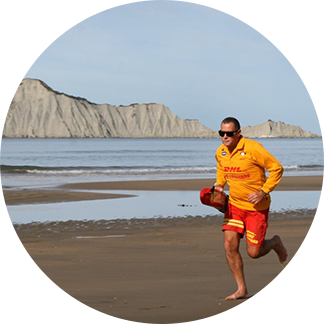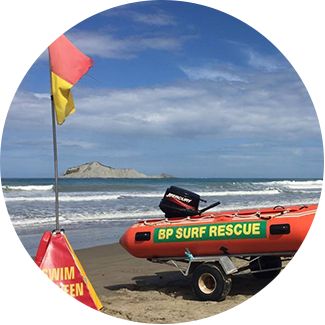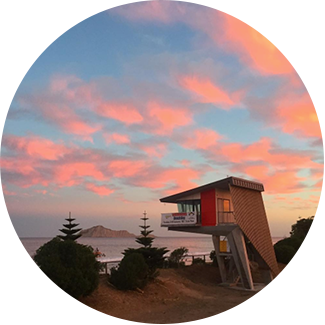
Beach Safety Tips
Protecting your community in the water – is about making one of New Zealand’s most popular playgrounds safe for everyone to enjoy.
We are best known for the beach patrols Surf Lifeguards provide at over 80 of New Zealand’s busiest beaches throughout the summer. But that is just part of what Surf Life Saving does.
Educating people so they can stay safe at the beach, in fact around moving water, is just as important, whether it is fishing, boating or just being out in the sun.
Moving water is always a risk. Water pushed into the beach by waves has to find a way back, either by scouring channels in the sandy bottom, or moving along the beach until it finds rocks in its path where it quickly changes direction to head out to sea. This water moving back out to sea is commonly called a rip. Rips often appear in different places each day.
Swim between the flags
Surf Lifeguards use the red and yellow flags to show the safest place to swim that day. During the day the flags may be moved as wind, tide or surf conditions change, so always check where they are.
Be Sun smart
New Zealand has the highest death rate from melanoma in the world, each year 200 people die from melanoma and another 50 die from other preventable skin cancers. Remember to apply sunscreen before you go out in the sun, reapply every hour or after you have been in the water. The higher the SPF rating, the longer the protection sunscreen offers.


Be smart around rocks
Whether fishing or exploring at the beach, rocky outcrops can be very dangerous in large surf. Don’t think a wave will simply wash around you, moving water is powerful. When fishing always wear a lifejacket and remember these rules:
- Never stand on a rock outcrop that is already wet- a sure sign waves will be washing over it
- Always face the ocean, never turn your back on the sea
- Always have a clear escape path to safe ground- don’t get caught by the sea.
